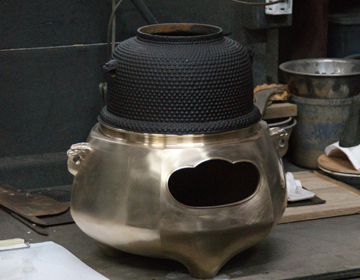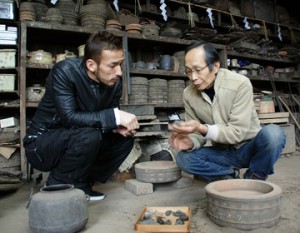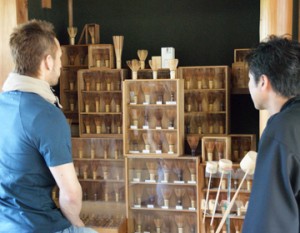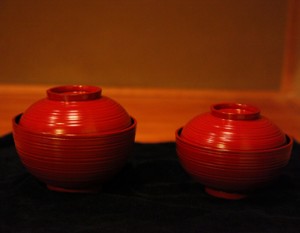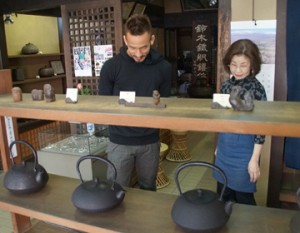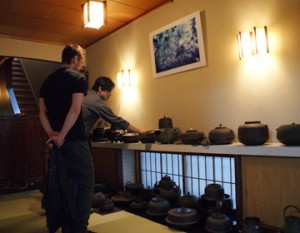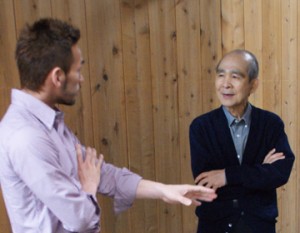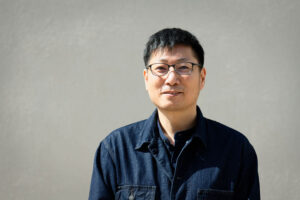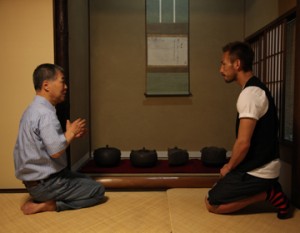Contemporary “chagama” is stuck with convention.
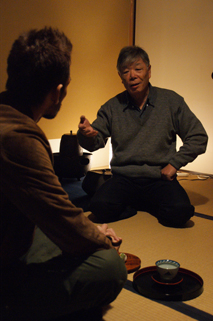
Nagano is a ”kamashi”, an artisan who makes ”chagama” or kettles used for tea ceremony. One would imagine that there must be many formalities in ”chagama” making.
”Basically, there are hardly any rules as to how a ”chagama” should be. However, after Rikyu, there rose several schools of tea ceremony, and each school had a convention of their own.”
According to Tetsushi Nagano, until the middle of Edo period, ”chagama” were made to order, and there were various designs according to customers’ tastes. When looking at the old ”chagama” of Momoyama Period, ”there were many ”chagama ” of unique designs more modern and original than the contemporary ”chagama”.
The word modern means designs or forms which fit the sense of the era. Contemporary ”chagama” lost its freedom, having to respect the convention of each school.
Remove the convention and pour in the modern sense.
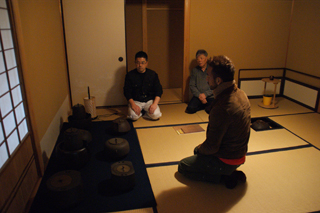
So, his predecessor took the stance of doing ”Momoyama Revival” in contemporary settings. Then after a while he said, ”Now it’s time that we make in the style of our age.”
So, Tetsushi Nagano thought, ”I like Isamu Noguchi, so maybe I will project that to ”chagama”,” and he created works of modern designs. ”People used to say I am a nonconformist,” laughed he, but his philosophy is handed down to his son, Arata, and he also creates works with designs and patterns that never existed before, and his works are highly evaluated.
Japanese traditional iron, ”wazuku”
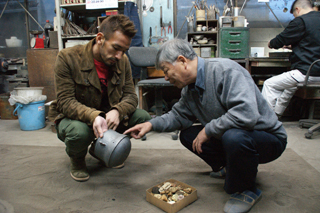
Through such activities, he encountered ”wazuku”, Japanese traditional iron. ”Wazuku” is made by collecting sand iron, and refining it by ”tatara” iron making method. The productivity of ”wazuku” was very poor, so it was soon to be replaced by imported iron from the West. However, ”wazuku” is resistant to rust, and very durable, and ”chagama” made of this iron is said to last for 200 to 300 years. And it also has the advantage of being able to be processed very thinly and to make light and stylish products. Nagano set up a foundry and started a research, in order to produces works using ”wazuku”
Making works of contemporary design with ”wazuku” of ancient Japanese tradition. It may seem contradictory, but when they harmonize that may create a new tradition.



